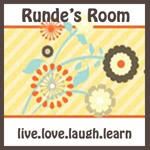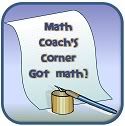My first stop was archives of articles written by Dr. Eugene Maier, founder of The Math Learning Center.
He has a particular interest in visual thinking as it relates to the teaching and learning of mathematics. He's coauthor of the Math and the Mind's Eye series and has developed many of the mathematical models and manipulatives that appear in Math Learning Center curriculum materials.
"There is no question that being able to instantaneously recall arithmetical facts can be a convenience. However, one must weigh this convenience against the price paid in forcing rote memorization of facts and giving timed tests, especially when there are so many other ways of arriving at these facts, be it by counting, reading a chart, or punching a calculator."
-Dr. Eugene Maier
Which led me on to find . . .
- The teachers featured in this issue have a common understanding that there is not a single strategy for teaching mathematics and science that works for all learners. However, differentiating instruction does not mean coming up with individual lesson plans for each student. The articles that follow demonstrate how teachers find multiple ways to draw students into content and provide multiple ways for students to master concepts and skills. Teacher Colleen Hagen points out that differentiating instruction requires ingenuity and perseverance: "It might take explaining a concept from three different angles, using three different manipulatives, before a student gets it." The payoff for teachers is being able to say, "I taught this," and knowing that their students have "really learned." - NWREL Northwest Teacher Spring 2002 Volume 3 Number 3
- Misunderstood Minds (Click here for VIDEO) - PBS companion site to the special on learning disabilities. "Mathematics draws on varied types of understanding, and this leaves some kids stumped - - -Explore stories from the show . . . Included on the site are these suggestions:
- Teach basic concepts using concrete objects. Let children explore number concepts by adding and subtracting objects in the room (for example, add the legs of a chair to find the number four or subtract crayons from a box). Move from concrete materials to pictorial representations to numbers (abstract representations).
- Provide specialized materials. To help children organize their calculations, have them use graph paper (or lined paper turned sideways) to keep numbers in columns. Encourage the use of scrap paper to keep work neat, highlighters for underlining key words and numbers, and manipulatives such as Cuisenaire rods, base-ten blocks, or fraction bars.
- Make your expectations explicit. Tell children the procedures you would like them to use when solving a problem, and model each procedure for them. Have a child then tell you what he is expected to do. Some students benefit by having a math notebook filled with examples of completed problems to which they can refer if they become overwhelmed or confused.
- Use cooperative math-problem-solving activities. Provide opportunities for children to work in groups when solving math problems. Encourage them to share their thinking aloud as they solve problems. Reinforce efficient strategies using multiple pathways.
- Provide time for checking work. Emphasize that completing math assignments is a process. Encourage children to become comfortable reviewing their work, making changes, or asking questions when they are unsure of their answers.
- Give children opportunities to connect mathematical concepts to familiar situations. For example, when introducing measurement concepts, have children measure the height of classmates and family members, or the weight of their book bags when empty and when full. Ask children to estimate the measurements (guessing how much taller the refrigerator is than the stove) before solving the problem. Point out how math is used in everyday life, such as when examining bus schedules or filling out catalogue order forms.
- Help children apply math concepts to new situations. Show children how to use percentages to understand the price of a jacket on sale at the mall or the amount of their allowance spent on snacks.
- Provide tutors. Tutors can assist children with weak math subskills (such as multiplication and division). Arrange for tutors during summer months or after school to boost performance and ensure that the child retains his skills.
- Focus on the information provided in word problems. Have children separate the necessary information for solving the problem from unnecessary details.
- Teach mnemonic strategies for solving word problems. Choose strategies that suit the child's learning style. One strategy is TIPS: Think (read and paraphrase), Information (what numbers and information do you need in order to solve the problem), Problem (write equation), Solve.
- Encourage children to put problems into their own words. Teach children to read for meaning when trying to identify the operation to use for solving a math problem. Have them verbalize the problem before trying to solve it.
- Teach math vocabulary. Review the meaning of key words and phrases commonly used in mathematics problems, such as "all" or "total" in addition problems ("How much money did they spend in all?" "What was the total amount of the grocery bill?"). To help children identify key terms in problems, ask them whether a problem requires a particular procedure, and have them underline the word or term that gave the answer away. Include new vocabulary in their rule books (see above).
Read more . . . .
"To address phonemic awareness difficulties, curriculum materials and instructional approaches developed by Blachman (1994), O'Connor et at. (1996), and Torgesen et al. (1992), among others, have proved to be successful in boosting the phonemic awareness and subsequent reading ability of many students, Similarly, there is evidence that curricula such as Number Worlds have the potential to help students develop number sense while also building computational and problem-solving skills (Griffin, 1998)."
LD Online
Read more . . .
While the site for Number Worlds (referred in the above) focuses on K-2 math instruction, a GOOGLE revealed SRA's NUMBER WORLDS intervention program. I'll add the link for it to SUPPLEMENTAL MATERIALS blog.
While the site for Number Worlds (referred in the above) focuses on K-2 math instruction, a GOOGLE revealed SRA's NUMBER WORLDS intervention program. I'll add the link for it to SUPPLEMENTAL MATERIALS blog.



















0 comments:
Post a Comment